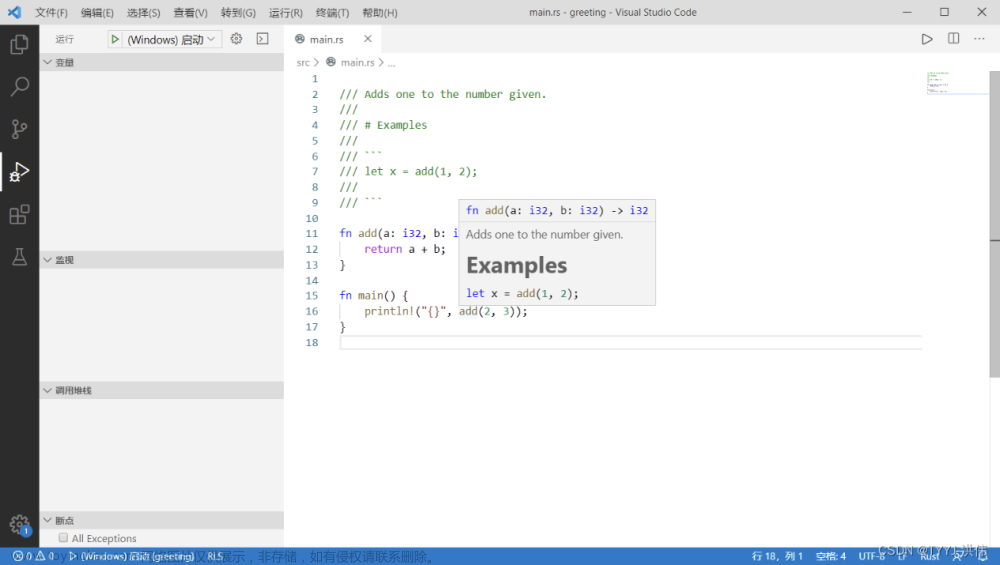rust的Defef
介绍
pub trait Deref {
type Target: ?Sized;
// Required method
fn deref(&self) -> &Self::Target;
}
用于不可变的解引用操作,例如 *v ( immutable dereferencing operations)。
除了在不可变上下文中使用(一元)* 运算符进行显式解引用操作(for explicit dereferencing operations with the (unary) * operator in immutable contexts)之外,Deref 还在许多情况下由编译器隐式使用。这种机制称为“Deref 强制 Deref coercion”;在可变上下文中,请使用 DerefMut。
为智能指针实现 Deref 可以方便地访问其背后的数据(makes accessing the data behind them convenient),这就是他们实现 Deref 的原因。另一方面,关于 Deref 和 DerefMut 的规则是专门为适应智能指针而设计的(were designed specifically)。因此,Deref 应该仅针对智能指针实现,以避免混淆。
出于类似的原因,这个特性永远不应该失败。当隐式调用 Deref (invoked implicitly)时,解引用期间(Failure during dereferencing)的失败可能会非常令人困惑。文章来源:https://www.toymoban.com/news/detail-724419.html
关于 Deref coercion 更多信息
If T implements Deref<Target = U>, and x is a value of type T, then:文章来源地址https://www.toymoban.com/news/detail-724419.html
- In immutable contexts, *x (where T is neither a reference nor a raw pointer) is equivalent to *Deref::deref(&x).
- Values of type &T are coerced to values of type &U
- T implicitly implements all the (immutable) methods of the type U.
- 如果 T 实现 Deref<Target = U>,且 x 是类型为 T 的值,那immutable场景下,*x(T既不是一个引用,也不是一个原始指针),等价于 *Deref::deref(&x)
(Deref::deref(&x) 返回值是 &Self::U,然后解引用是 Self::U) - &T 类型的值被强制转换为 &U 类型的值(应该说的是deref方法)
- T 隐式实现 U 类型的所有(不可变)方法 (有待理解)
示例1
use std::ops::Deref;
struct DerefExample<T> {
value: T
}
impl<T> Deref for DerefExample<T> {
type Target = T;
fn deref(&self) -> &Self::Target {
&self.value
}
}
fn main() {
let x = DerefExample {
value: 到了这里,关于rust的Defef和DerefMut学习的文章就介绍完了。如果您还想了解更多内容,请在右上角搜索TOY模板网以前的文章或继续浏览下面的相关文章,希望大家以后多多支持TOY模板网!








